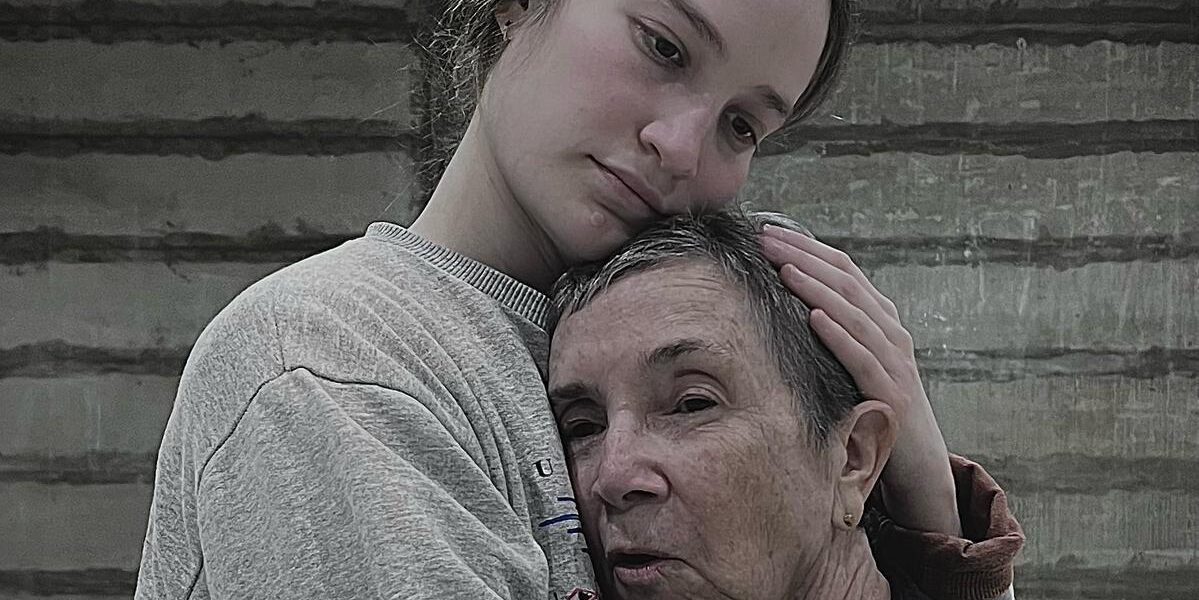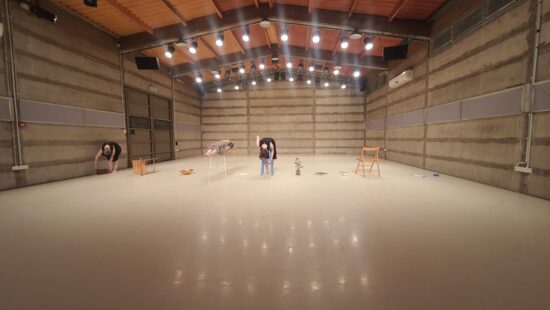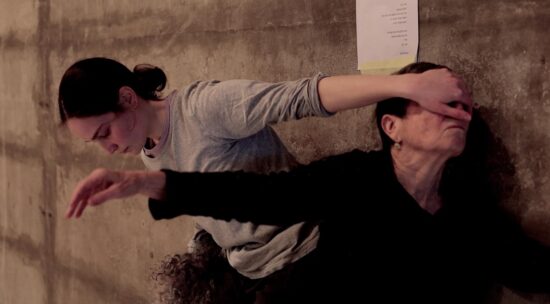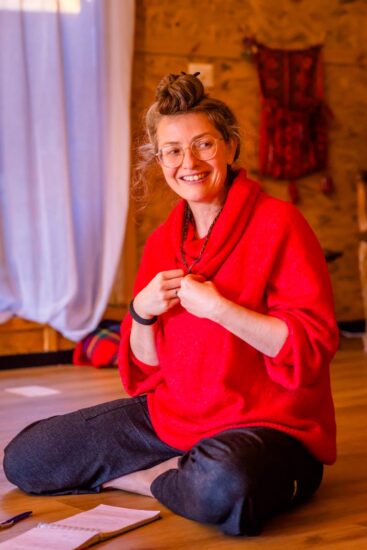I Think, Therefore I Am? Revisiting Descartes’ philosophy through Lex Shcherbakov’s ‘Quis dixit mihi, quod ego sum?’ by Liza Futerman

Photo by Katrin Tolkovsky
An Introduction
The performance was presented as part of Kelim Choreography Center’s Accelerator Program for the development and performance of new dance works in collaboration with individuals from diverse communities. This is a professional training program for choreographers, designed to deepen both practical and theoretical knowledge in working with performers of mixed abilities, backgrounds, and ages including youth, elders, and people with disabilities. The program aims to foster systemic change in the field of contemporary dance in Israel, advancing a socially inclusive and artistically innovative practice that embraces a multiplicity of bodies, cultures, aesthetic values, and representations. It strives to challenge prevailing hierarchies and assumptions within the dance field, while cultivating professional excellence in inclusive choreography that meets global trends and international artistic standards.
The piece was originally conceived as an exercise within Kelim’s program, developed in collaboration with female dancers above the age of 60 who work regularly with choreographer Galit Liss. It is dedicated to its subject—the women who dance it. The piece delves into a deep encounter with the singularities of each performer, exploring presence and communication as the work’s driving force. This foundation becomes crucial to understanding the way identity is treated throughout the piece — not as a fixed construct, but as a relational, evolving experience. The piece explores the boundary between object and subject, between who is seen and who does the seeing and it does so through a multilayered narrative voice that is performed by the women on stage. In honoring the embodied voices of these women, the piece extends a wider philosophical gesture: to blur the boundaries between the performer and the choreographer, the speaker and the mover, the narrative and the absent text. It is within this liminal space that a unique creative voice emerges — not singular, but polyphonic.
Within this context, Shcherbakov’s “?Quis dixit mihi, quod ego sum” unfolds not only as a completed work but as a philosophical inquiry-in-process — a meditation on presence, absence, and the fluidity of identity. The piece invites the audience to witness, question, and dwell in ambiguity alongside the performers, and to become co-inhabitants of its unfinished, timeless universe.
Chekhov’s gun
The performance opens with a quiet procession: the choreographer, a stage assistant, and the three performers enter unceremoniously, placing a line of objects across the stage — a wooden chair, a bowl of pomegranates, a clock (later to be revealed as missing its hands), a box of tissues, a plant and a roll of tape. The arrangement is both meticulous and opaque, evoking the logic of a ritual whose meaning is withheld. It recalls Chekhov’s principle — that if a gun is placed onstage in the first act, it must go off by the end of the play.
What follows is a series of tableaux vivants where the performers interact with the lined up objects. As a familiar artistic self-referential technique, when a tableau vivant appears in performance art, one that primarily deals with choreography, the tableau might be overlooked altogether and interpreted as a common freeze notion. Given that the piece introduces a myriad of interdisciplinary practices, we are provoked to view these opening moments as the piece’s way to step into a self referential mode that asks both the piece itself and the audience to reflect on the nature of art and on our perception of art/reality duality.
What follows is a spoiler alert:
The pomegranate, lush and still in the opening tableau, later explodes against the floor in a brutal, unexpected gesture. The clock remains mute. And Chekhov’s book — absent from the initial lineup but pulled later from beneath an audience member’s seat — becomes a meta-commentary on narrative expectation: the story one seeks in it is missing, not because it was lost, but because it was never there to begin with. Absence here is not an omission, but a choreographic gesture that invites our attention to what is present within the gap of non-existence.

Photo Liza Futerman
Displacing bodies through language
The piece’s choreographic language leans into layered ambivalences — working through fragmentation and slow accumulations of dissonance. The performance moves between bodily presence and narrative displacement. The dancers speak in first person singular, stating the action before actually acting upon it — “I take the clock to the centre,” “I tape the text to the wall,” “I place the bar stool stage right” — then they state the action, still in first person singular: “I go to the table,” “I sit on the chair” – but instead of carrying out the action, another mover or two other movers do so instead.
One body narrates, another executes. This separation begs the question: would the speaker move differently if she performed her own narration? Would the movement change if it came from within, rather than being projected outward and re-embodied by another? Identity here is not stable — it migrates across bodies, across voices while resisting closure, it asks us instead to remain attuned to the gaps — between object and action, between text and gesture, between I and not-I, between ceremonial and mundane, and later between realism and surrealism.
Embodied mysticism
Later in the piece, one of the performers places a sheet of paper against the back wall and begins to read aloud in Hebrew: “The kidneys are the site for memory. The heart and the kidneys are dancing in a quiet rhythm. The kidneys are telling secrets to the heart.” These words, anatomical yet poetic, evoke a kind of embodied mysticism. The phrase recalls a Kabbalistic framework — where the heart and kidneys are understood not just as physical organs but as metaphysical instruments of divine discernment. In Hebrew scripture, it is said that God examines the “lev va’klayot” — the heart and kidneys — to understand the inner truth of a person. Within the context of the performance, this moment lingers as a quiet spiritual interruption: a suggestion that memory is not held in the mind alone, but in the visceral experience of existence: in the fluid conversation between organs, movement, language and strategic meaning making sequences.
When the profound meets the mundane
Another moment that stands out takes place when one of the performers recounts walking up the stairs of her apartment building while the janitor was washing the floor. She recounts tiptoeing carefully around the wet tiles as to respect the janitor’s hard work. At this moment he stops his meticulous work of cleaning the tiles, looks up and calls her “a ballerina”. She describes this with quiet joy — she had always wanted to be called a ballerina. What is striking in this moment and somewhat ironic is that she wasn’t performing ballet — she was navigating a practical moment, a mundane adjustment of posture in response to a wet floor. But even within functionality, something expressive emerges. This anecdote reframes the boundary between performance and life, between expression and function. It suggests that identity is something that happens in the intervals, as something to be noticed precisely in the moments when we are not trying to be anyone at all.

Photo by Katrin Tolkovsky
Back to Chekhov’s gun:
The following scene that strikes my attention is the one in which one of the performers crosses the 4th wall, and reaches under one of the chairs in the first line where members of the audience sit perplexed to see what to happen next. She returns to the stage with Chekhov’s book and takes her seat at the table. A candle lit beside her, she holds the book as if reading a ghost story — one that exists in her memory but is absent from the pages of the book. The absent story — becomes the performance’s silent core. The performer in its ghost-like apparition describes a girl whose father dies when she is thirteen — a rupture that turns her life upside down. She starts working night shifts as a maid. One night, while watching over a crying infant, exhausted beyond containment, she strangles the baby. As the narrating performer utters these words, the youngest dancers of the trio throws the bowl of pomegranates against the floor, as if shattering the promise of fertility, sweetness, and beauty. The pomegranates land as an implosion — the moment when what cannot be carried any longer must cease to exist or at least change its form dramatically. Despite the dramatic intervention, the narrating performer proceeds calmly to the closing line of this scene: “as soon as the baby’s crying stopped, the young girl immediately fell asleep as if she was dead.”
The piece forms a universe of enigmatic and strikingly ironic present absences — a world where what’s missing is not a gap to be filled but a space to be inhabited. Objects appear only to disappear. Narration floats free of the body, bodies are displaced and lost in translation, stories are searched for in books where they never existed. Time folds in on itself, and identity splinters between speaker and mover, memory and flesh.
The final image is quiet but definitive. The lights go out. The performer who recounts Chekhov’s absent tale, seated beside her candle, blows out the candle and closes the performance with a single line: “Now we are in darkness.”
The first person plural “we” includes the audience, the performers, the time’s invisible hands, the silenced baby, the sleeping young girl and everything else that took place on the stage that night. The “we” soars in midair as an invitation to consider what part we play in this invented universe? What do we carry in the dark? And can we trust that the absence we sit in together could also reveal that which is present in spite of all the darkness.
In this final inclusive gesture, the audience becomes not only a witness, but the primary addressee of the title’s question. The darkness, shared now by all, is not only the performance’s end — it is its final provocation. It invites us to dwell in the unknown, not as a void to be filled, but as a condition of being. In this universe of fractured meaning and unstable identities, darkness is not simply an absence of light — it is the space where assumptions dissolve, where certainty falters, and where the possibility of new awareness emerges. To be in darkness is to consent, momentarily, to know that we don’t know — and to accept that this too is a way of being– a way we are not always willing to admit is an essential part of who we are.
Lex Shcherbakov presented ‘Quis dixit mihi, quod ego sum?’ featuring Noa Manor, Orit Gross and Anna Rizel at Kelim Choreography Center in March 2025.
 Liza Futerman is a graduate of the MSt in History of Art and Visual Culture at Exeter College, Oxfard (2013), where she was the first recipient of the Rivka Carmi Scholarship. Currently, she’s pursuing an MDance in Choreography at the Jerusalem Academy of Music and Dance. Liza is a certified instructor of Inclusive Contact Improvisation dance, and the founder of the Somatic Learning & Arts Centre- an initiative dedicated to trauma-sensitive education, where movement and embodied creativity are used to reduce burnout and cultivate empathy. Her work explores how the body can be a site of reflection, connection and meaningful learning. She is also the auther of Don’t Forget Your Heart (2022) and Keeper of the Clouds (2016), two children’s books for adults that weave together art, grief and the healing potential of creative expression. Liza joined the Creative Writing team in 2025.
Liza Futerman is a graduate of the MSt in History of Art and Visual Culture at Exeter College, Oxfard (2013), where she was the first recipient of the Rivka Carmi Scholarship. Currently, she’s pursuing an MDance in Choreography at the Jerusalem Academy of Music and Dance. Liza is a certified instructor of Inclusive Contact Improvisation dance, and the founder of the Somatic Learning & Arts Centre- an initiative dedicated to trauma-sensitive education, where movement and embodied creativity are used to reduce burnout and cultivate empathy. Her work explores how the body can be a site of reflection, connection and meaningful learning. She is also the auther of Don’t Forget Your Heart (2022) and Keeper of the Clouds (2016), two children’s books for adults that weave together art, grief and the healing potential of creative expression. Liza joined the Creative Writing team in 2025.
